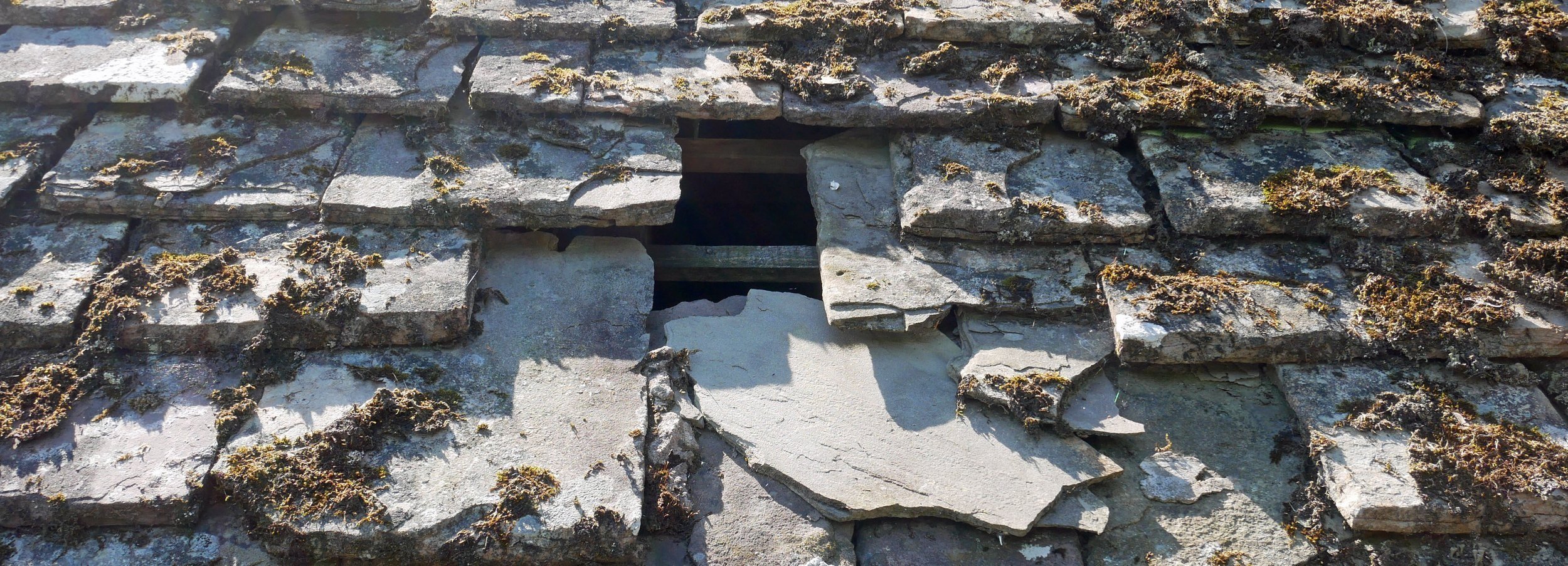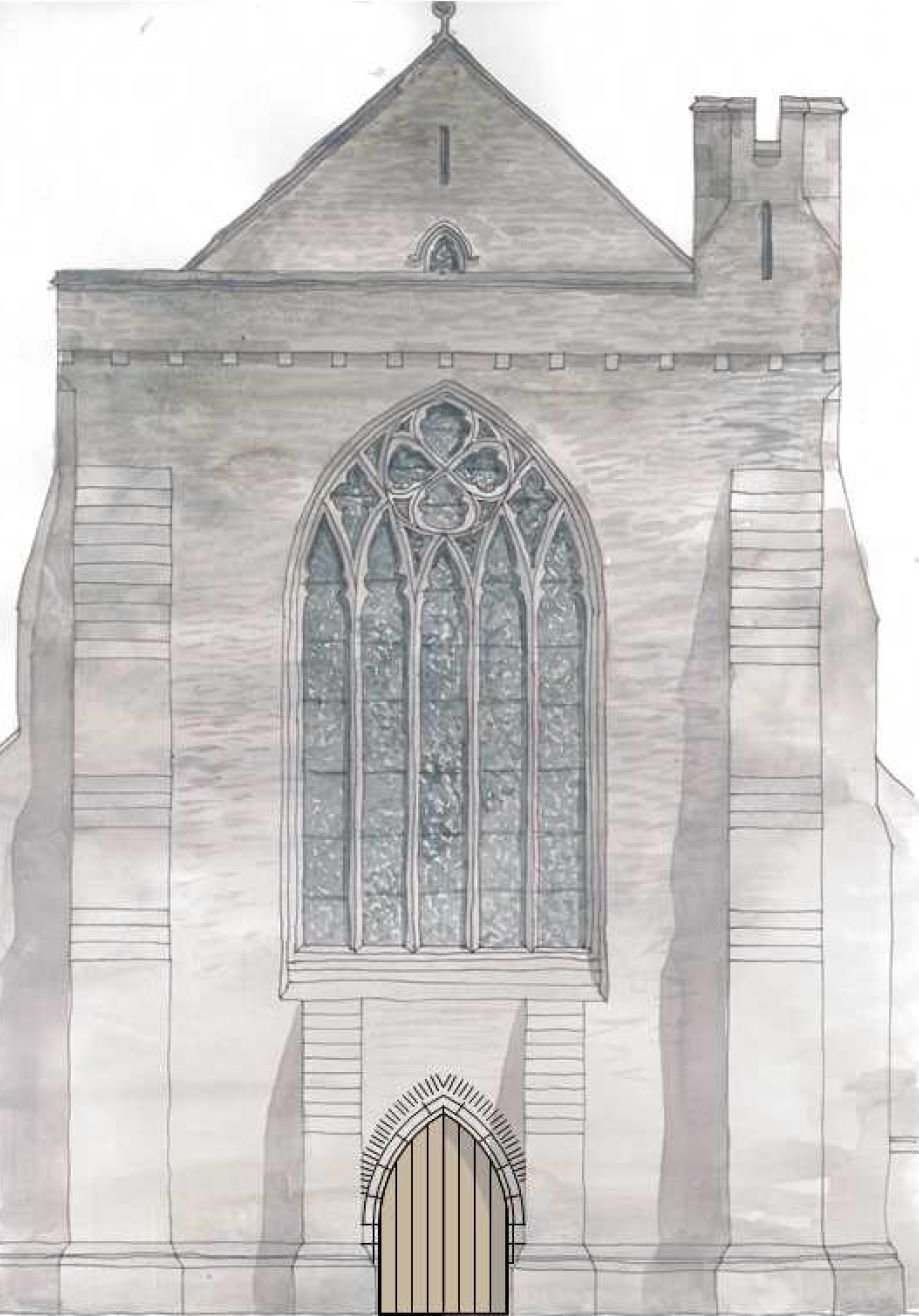
People | Passion | Priory
Background to Project
As part of his appointment, the Dean was charged with bringing the Cathedral into good repair. He soon realised this was a far larger task than had been previously understood. He commissioned an inspection of the fabric of the Cathedral, which showed significant deterioration to the roof, gutters, and external masonry (see the two images below). As a result of this report, the Fabric and Buildings Committee recommended to Chapter on 23 November 2015 that a ‘major restoration project is now necessary’ identifying the roofs, masonry, a new reordering of the interior, and an overhaul of the Cathedral Close leading to a new entrance accessible by able-bodies and non-able-bodied alike.
Chapter accepted these recommendations and appointed Rev’d Michael Bunker and Mr Nigel Morgan to advise on the project. Rev’d Bunker had raised funds for a major restoration to Peterborough Cathedral when he was Dean there, and Mr Morgan had project managed the repairs to All Saints' Church, Oystermouth, a large church in the Diocese.
A Project Executive Board was established to develop the project, now named ‘People | Passion | Priory: Brecon Cathedral, The Heart and Soul of Community’, and to canvas opinion as to the priorities to be undertaken. We also spoke to funding and statutory bodies such as the National Lottery Heritage Fund (NLHF), CADW, and the Bannau Brycheiniog National Park. It became clear that we could only proceed if the National Lottery agreed to fund us.
Speaking to these organisations it became clear that an overriding priority must be to make the building accessible to all equally. No funding or permissions would be given to a building that effectively discriminated regarding access.
Eventually, this work led to a Round 1 application to the NLHF. The Round 1 award is to develop the project. Although we had to show an indication of what we wanted to achieve, and some ideas to demonstrate our thinking, this would be developed, changed, and refined in the Development Phase leading to another application for grant money to actually do the work at Round 2.
Round 1: First Bid
We had been warned that it is often only on a third attempt to the NLHF that funding would be awarded and so we put in our first application with much trepidation. Our bid had as its focus: (1) to protect our heritage with roof and masonry repairs, (2) to improve access, and (3) to transform the Cathedral building into a vibrant visitor destination. We asked for £3.87 million against a total project cost of £5.725 million (68% grant).
We were turned down. The cost was considered way too expensive, and the scheme included too much new development work around the proposed new entrance (below). We were told to scale back considerably on the capital build and widen our horizons as to what the Cathedral could achieve as a result of the project. Our focus had to be on our end users not the repairs in themselves.
This led to a second Round 1 application to the NLHF.
Round 1: Second Bid
We identified four main aspects for the project:
Position the Cathedral as a learning centre for life skills, education and outreach, to support health and well being and address isolation in our rural and agricultural communities.
Enable the development of new audiences for Brecon Cathedral, by improving physical (and psychological) access to the building to attract a greater mix of people.
Develop the Cathedral as a major visitor attraction, by interpreting its stories of national and international significance, and to maximise economic returns by staging major cultural events.
Promote conservation, sustainability, heritage, culture, and the art of living well together.
We took away our ambitious design for the entrance and came up with a far less intrusive entrance (below), we took out some of the less urgent work from the specification and, most significantly, we phased the roof repairs so that we were only applying for roofs east of the Nave (the rest would be completed in a further project). This brought the costs down considerably.
We asked for £2.29 million against a total project cost of £3.56 million (64% grant).
We were turned down. The amount of grant we were asking for was still considered too large, although the NLHF did acknowledge that the overall costs were lower. However, the feedback was extremely positive, and we were invited to apply a third time. The work we needed to do in the meantime was very clear but also very demanding.
Pre-Application Development
At this stage, a fresh look was necessary and so we employed DCA Consultants to advise us on the project. They brought in other consultants, such as Headland Design, to help us develop our visitor offer through a new Interpretation Plan and an Activities and Events Plan. They also undertook far more thorough consultation, including a large public meeting (below). Whilst we listened intently to advice, the vision of the project remained true to our first intentions: secure the fabric, make access equal for all, and develop our building as a major cultural, heritage, and event attraction in the area.
This led to a third Round 1 application to the NLHF.
Round 1: Third Bid
The third bid expanded our aims into eight categories, which can be read about here.
We asked for £1.58 million against a total project cost of £3.25 million (49% grant overall).
This time, we were successful. Although we had indicated to the NLHF our preferred options for the work (as is required), this was all now subject to development, refinement, and even change throughout the Development Phase, especially after consulting our key partners and listening to feedback. The real work was about to start.




